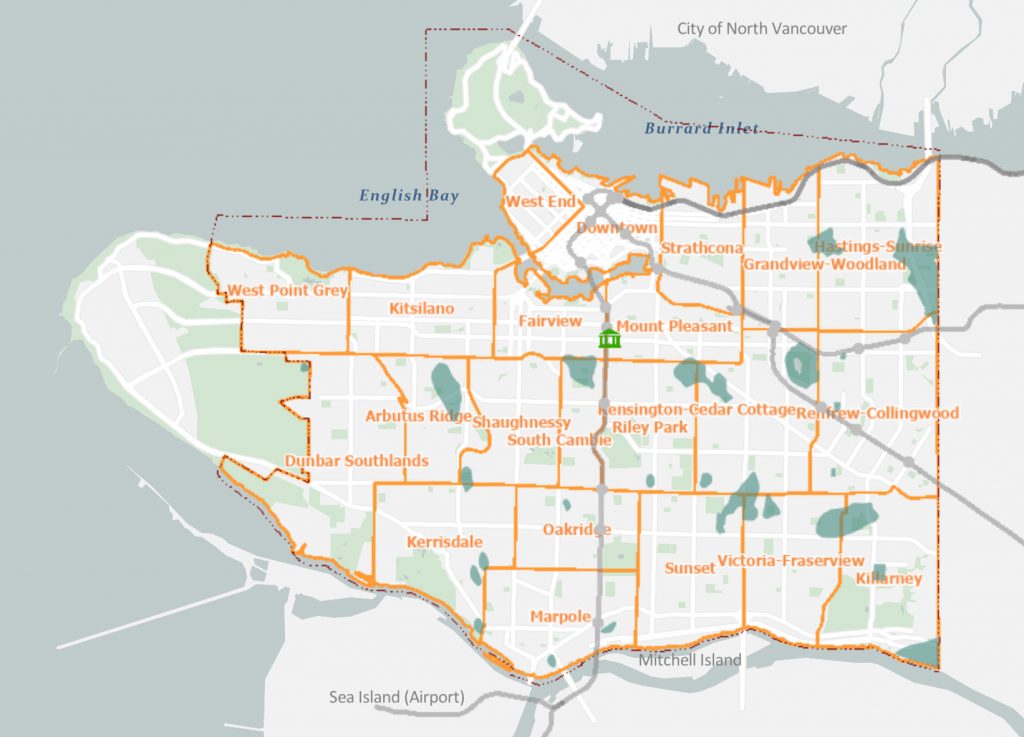One curious detail that Vancouver homeowners and potential homeowners need to be aware of is the soft land found in various areas of Vancouver’s East and Westside. Vancouver used to have many streams running through the city and False Creek used to be much bigger than it is today. These areas have been drained and filled in over time, but certain spots have soft soil which needs special attention when it comes to older houses and new construction requirements. This soft soil is a peat bog – soft soil made up of slowly decomposing organic matter. If you have ever driven down a road in a boggy area, you may notice that the sidewalks and streets are not very flat – this is due to slight shifting over time in soil that doesn’t have a lot of structure. It is the City of Vancouver’s job to fix these sidewalks and streets when needed.
These boggy areas can lead to structural and drainage problems for older homes and added (and potentially expensive) building permit requirements when it comes to new construction and major renovations.
Attached is a screenshot from Vancouver’s VanMaps Viewer, which shows the City of Vancouver’s known but unconfirmed peat bog areas (the dark green splotches). This map is not a definitive resource – there needs to be specific site testing done to verify any potential issues with the soil, so if the home is close to these areas, think about doing extra site testing and make sure you get a home inspection.

Older Homes in the Peat Bog
If you’re looking to buy an older home located in or very close to a peat bog, you’ll need to do extra due diligence to ensure the property does not have any structural or drainage problems, and what happens if the house develops a these issues over time. These houses may feel uneven and may show signs of sinking. Extra attention and maintenance needs to go into the foundation and drainage around the property.
Older properties in the peat bog are typically less expensive due to the risks involved. I don’t know the exact timeline by which the City required special building requirements for peat bogs, but I would be especially weary of houses built in the 1990’s or earlier, with special attention to homes built since the 2000’s. If you plan on living in the older house, you need to make sure that you have done specific research into the site so you’re not surprised by an expensive bill in the future.
New Construction in the Peat Bog
When it comes to new construction, any issues with the peat bog should be dealt with during the initial design and build. The City of Vancouver requires specific reports prior to any building permit and then requires a special kind of foundation to ensure a solid home.
First, the builder must bring in a geotechnical engineer to have soil samples done to indicate the type of soil as well as the depth of solid ground. The City of Vancouver requires specific reports – detailing the depth and characteristics of subsoil materials, recommendations for the design and construction of the foundation, assessment of predicted settlement, and more –
to approve any building permits in this area. Once approved by the City, the builder will have to install a pile foundation, which are columns inserted to the depth of the solid ground. The new house foundation will be built on top of these piles, giving the home a foundation connected to solid ground.
It costs builders extra money and time to produce the required reports and install the pile foundation, so the cost of construction can be significantly higher in these areas compared to a non-boggy area. The cost will vary significantly depending on how far down the solid ground is – there is a big difference in cost between a few feet and forty feet. If the peat is only a few feet deep, the builder may be able to dig it out and backfill, but that comes with its own costs and issues, and still requires specific approval by the City.
Once a new home is built on a foundation pile, there isn’t much to worry about as a homeowner. You may notice the sidewalks become a little uneven over time but your house should remain solid. Another benefit to considering new construction homes in boggy areas is some of the East Van bogs are located in some of the most popular neighbourhoods – just off Main (to Kingsway) and around Trout Lake.

